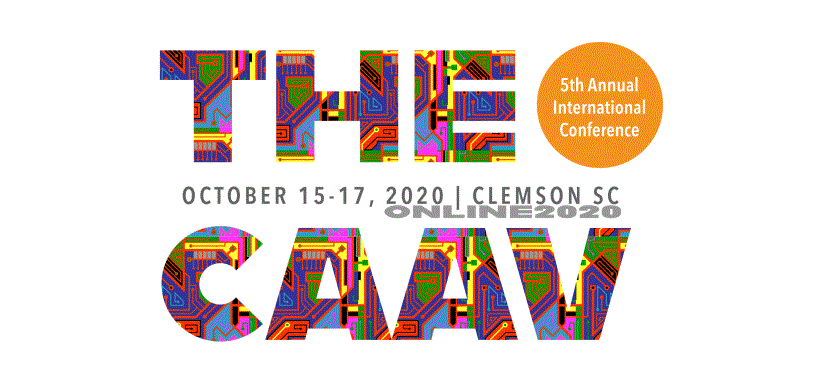The Decentralized Visualization Facility: Local and Remote Collaboration Using Commodity VR Hardware
Location
Clemson, SC
Start Date
15-10-2020 10:45 AM
End Date
15-10-2020 11:10 AM
Presentation Type
Presentation
Description
What, then, will be the reason for continued support of costly visualization facilities? We believe that the future of central facilities lies in the concept of “visualization as a service:” in addition to, or instead of, offering users a central place where they can use shared equipment to work with their own data, facilities will make their expertise, software, and support available to remote users who then work with their own data on their own equipment. In addition, facilities will provide central services such as shared data repositories and persistent shared virtual spaces where multiple users can collaboratively analyze shared data. For example, a visualization facility might contain a single CAVE or display wall. One or more users in that central system may then work with one or more remote users in their own respective commodity VR systems. Or, a visualization facility might consist of a “VR room” with multiple independent VR headsets, and let multiple users collaborate in a space that is shared both physically and virtually. Or, users in visualization facilities of heterogeneous types at multiple institutions may work together, or any combination of the above.
To support these use cases, KeckCAVES has been developing a foundational software framework, the Vrui Collaboration Infrastructure (VCI), for local and/or remote collaboration between multiple independent VR systems, including centralized high-end systems such as CAVEs or display walls and shared or individually owned and operated commodity head-mounted VR systems. The core principle of VCI is the creation of shared virtual spaces where users are represented as animated avatars or through live 2D/3D video, and can interact with other users via text chat, spatial annotations, and 3D spatial audio. Unlike many other shared virtual spaces, VCI is not a closed application, meaning its underlying collaboration protocol can be seamlessly extended via custom plugin protocols providing application-specific functionality. This not only makes it possible to develop new and highly interactive collaborative visualization applications, but also to extend existing single-user applications to multiple users. Examples include a shared application to view and analyze ultra-high resolution 3D scanning data; a shared application to analyze 3D volumetric data such as 3D medical images; a shared application to view and analyze results from large-scale molecular dynamics simulations; and a shared 3D network viewer.
The Decentralized Visualization Facility: Local and Remote Collaboration Using Commodity VR Hardware
Clemson, SC
What, then, will be the reason for continued support of costly visualization facilities? We believe that the future of central facilities lies in the concept of “visualization as a service:” in addition to, or instead of, offering users a central place where they can use shared equipment to work with their own data, facilities will make their expertise, software, and support available to remote users who then work with their own data on their own equipment. In addition, facilities will provide central services such as shared data repositories and persistent shared virtual spaces where multiple users can collaboratively analyze shared data. For example, a visualization facility might contain a single CAVE or display wall. One or more users in that central system may then work with one or more remote users in their own respective commodity VR systems. Or, a visualization facility might consist of a “VR room” with multiple independent VR headsets, and let multiple users collaborate in a space that is shared both physically and virtually. Or, users in visualization facilities of heterogeneous types at multiple institutions may work together, or any combination of the above.
To support these use cases, KeckCAVES has been developing a foundational software framework, the Vrui Collaboration Infrastructure (VCI), for local and/or remote collaboration between multiple independent VR systems, including centralized high-end systems such as CAVEs or display walls and shared or individually owned and operated commodity head-mounted VR systems. The core principle of VCI is the creation of shared virtual spaces where users are represented as animated avatars or through live 2D/3D video, and can interact with other users via text chat, spatial annotations, and 3D spatial audio. Unlike many other shared virtual spaces, VCI is not a closed application, meaning its underlying collaboration protocol can be seamlessly extended via custom plugin protocols providing application-specific functionality. This not only makes it possible to develop new and highly interactive collaborative visualization applications, but also to extend existing single-user applications to multiple users. Examples include a shared application to view and analyze ultra-high resolution 3D scanning data; a shared application to analyze 3D volumetric data such as 3D medical images; a shared application to view and analyze results from large-scale molecular dynamics simulations; and a shared 3D network viewer.


